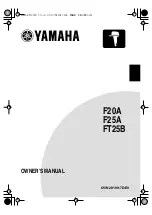
Helix Main Board
Assembly and Setup Manual
15
Comments, Questions or Concerns contact the developer at:
Assembly Notes
1.
The leads on the crystal are very fine, so be careful during installation to make sure they are not twisted or
bent. Insert the leads through the holes in the pads, orientation does not matter. Once it is almost fully
inserted bend the crystal over so that it is laying flush with the board in the area outlined by the solder
mask. Carefully solder the leads in place on the bottom side of the board. See Picture 1 for an example of a
correctly installed RTC crystal.
2.
Orientation matters with diodes. The diode has a light band marked on one end; this is the cathode. The
diode needs to be inserted in the PCB with this light band oriented with the band mark on the PCB (the
square pad). See Picture 2 for an example of a correctly installed diode.
3.
This crystal needs to be inserted until its base is flush with the PCB and soldered on the bottom side of the
PCB. Orientation of the crystal does not matter. See Picture 3 for an example of a correctly installed crystal.
4.
This is a full wave bridge rectifier, orientation matters. Align the markings on top of the chip with the
markings on the PCB. I.e. the pin with "+" inserted in the hole marked "+". Solder on the bottom side of the
PCB.
5.
These sockets need to be inserted until they are flush with the PCB. Solder one of the pins. Check to make
sure the socket is flush and perpendicular to the PCB, reheat the pin and reposition as necessary. If the
socket is not perpendicular then the XBee Radio will not plug into them properly. After verifying that the
socket is installed correctly, solder all of the other pins. See Picture 4 for an example of correctly installed
RF1 sockets.
6.
Orientation matters with LEDs. The LED has one pin longer than the other; this is the anode. The LED needs
to be inserted in the PCB with the anode lead in the round pad.
7.
Orientation matters with bussed SIP resistors. This resistor has multiple resistors connected together by
one of their leads. This is the common lead; it is marked on the package with a dot. The other lead of each
resistor is brought out to a pin on the package. The SIP resistor needs to be oriented on the PCB with the
common lead inserted in the square pad.
8.
When installing DIP sockets ensure that the notch in the socket is aligned with the notch on the silkscreen.
Also make sure the sockets are flush with the PCB.
9.
Orientation matters with the MOSFET. Carefully bend the leads so they match the layout on the PCB. The
outline of the case needs to match the outline on the silk screen.
10.
Carefully break off the appropriate number of pins off of the 40 pin 0.1” pitch strip header (Mouser Part#
517-6111TG). Solder this section on to the PCB with the longer leads facing up. Make sure the header is
perpendicular to the PCB. See Picture 5 for an example of a correctly installed header.
11.
Carefully break the 5 pin 0.1” pitch strip header (Mouser Part#
517-929834-01-05-RK
) into a two pin and three
pin headers. Solder these headers on to the PCB with the longer leads facing up. Make sure the header is
perpendicular to the PCB. See Picture 5 for an example of a correctly installed header.














































